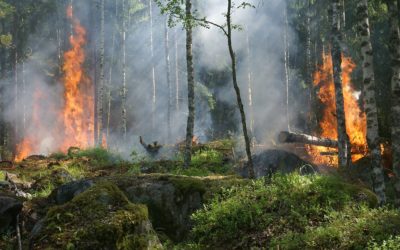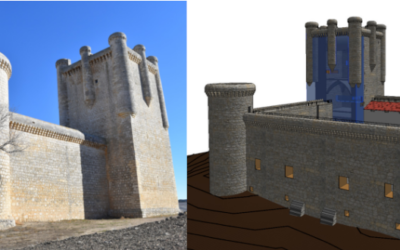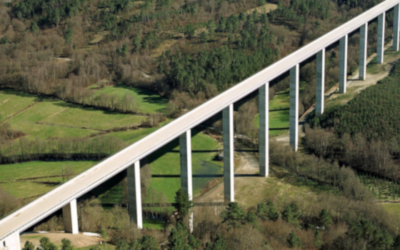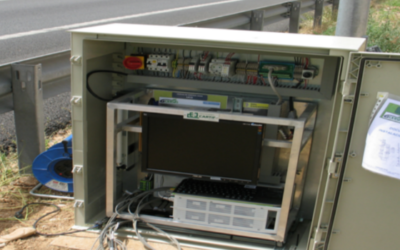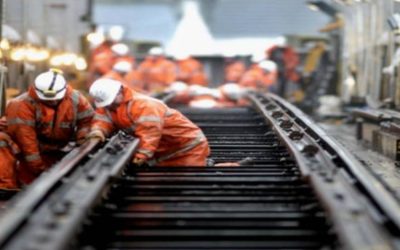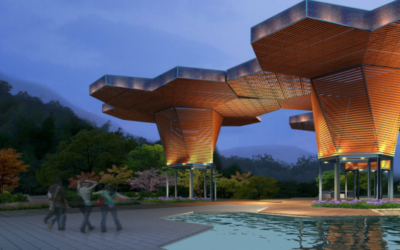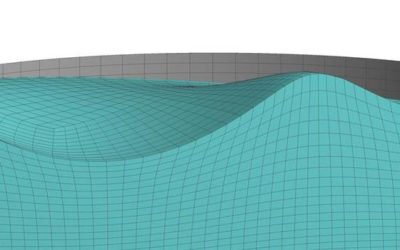BLOG CARTIF
Construction and Heritage


Construction & Heritage
Artificial Intelligence and Cultural Heritage: A Promising Alliance (With Nuances)
Artificial intelligence can transform the conservation of cultural heritage by analyzing large volumes of data, detecting patterns, and helping experts make more informed decisions, without replacing their judgment or sensitivity.
Preserving what we are: a new technical perspective on the maintenance of built heritage
Beneath the vaults of a Gothic church, within the thick walls of a Cistercian monastery, in the stucco of a Renaissance palace or the rammed earth and timber frames of a traditional house, a single truth emerges: built heritage is an essential part of our history and...
Why monitoring rural territories
Rural territories often struggle with challenges that can hold back their growth and development. Infrastructure gaps, limited job opportunities, environmental risks, and the need for greater social inclusion are just some of the issues they face. However, they now...
How does the term “metal-eco-additive manufacturing” sound?
The term eco-design is rather known nowadays, but you’ve probably heard little about eco-manufacturing, especially since it's not a term widely recognized in technical or academic literature. However, it is a concept that has recently started to be used to describe...
The black gold of Castilla y León: its Cultural Heritage
The Statute of Autonomy of Castilla y León, in its preamble and several articles, emphasize the importance of Cultural Heritage as an essential part of the identity of this Community and as an asset to protect and promote, due to its unique richness and the...
Talking about everything visible and invisible (II)
Refreshing your memory, in the previous blog “Talking about everything visible and invisible (I)” we briefly told you about the digital technologies and techniques used to inspect, document and analyze Cultural Heritage in the visible range (the one that our eyes...
Collaborative robots: new work employees on construction
The construction industry is undergoing a quiet revolution. While cranes and excavators continue to take centre stage on construction sites, a new type of worker is gaining ground: collaborative robots, or "cobots". These efficient helpers will transform the way we...
METABUILDING Labs, or how to improve the technical and environmental quality of façade components for building construction
The construction sector has evolved over the years and, with it, processes and products have gradually adapted to the needs of the market at all times. At CARTIF we have been researching and working in the field of infrastructures and building around thirty years to...
Talking about everything visible and invisible (I)
The European Collaborative Cloud for Cultural Heritage (ECCCH), created in 2023 and aimed to create innovative tools for digitizing cultural heritage objects, is a trending topic in the UE applied research to ensure the sustainable and affordable conservation of our...
What does decarbonization have to do with Cultural Heritage?
Decarbonization is the "trending topic" of terms related to sustainability, energy and the environment. It is the process of reducing the amount of carbon dioxide (CO2) released into the atmosphere. Decarbonization means reducing climate change and dependence on...
Interdisciplinary Teams: The Future of Cultural Heritage
Innovation and new technologies bring forth a variety of possibilities, obstacles and unknown questions that in order to be addressed, require the formation of interdisciplinary temas that allow for the reinforcement of each professional´s skills, enriching themselves...
If you own an old sculpture or painting, take it to the dermatologist
A wood lamp emits ultraviolet (UV) light and is a diagnostic tool used in dermatology to determine whether a person has a fungal or bacterial pathology on the sking or scalp. If so, the area illuminated by the wood lamp will fluoresce, becoming apparent in different...
Beyond strategy. Smart use of engineering expertise.
"Divide et impera", popular ancient Rome motto later attributted to the Roman emperor Julius Caesar. "Divide and dominate" or better known as "Divide and rule", was the strategic foundation on which the Roman Empire was built (27 bC - 476 ac). Almost nothing. In line...
Heritage and Cultural Tourism: A marriage of convenience?
Cultural heritage, in the broad sense, is the legacy received from our ancestors, which becomes the testimony of their worldview, their ways of life and their way of being, having to be passed down to future generations. Knowing the cultural heritage is to know the...
Why do we like some landscapes more than others?
Each landscape makes specific, different, unique feelings. When contemplating a meadow dotted with trees, we do feel something totally different from what we feel looking at a desert area. This also happens when facing cultural landscapes1. A Romanesque church does...
Innovating in construction: collaborative environments
It is a well-know fact how our environment has changed dramatically in the last years. This enviroment is in constant transformation, with uncertainities and aspects that are difficult to predict. Construction sector in particular, hasn´t been oblivious to such...
Monitoring the Effect of Cultural and Natural Heritage as a Driver for Rural Regeneration
Cultural and Natural Heritage (CNH) are irreplaceable sources of life and inspiration, according to the UNESCO definition. Europe´s rural areas represent outstanding examples of cultural, either tangible or intangible, and antural heritage that need, not only to be...
New strategies (and technologies) against huge forest fires
Although sometimes we forget it, forests provides huge benefits to the planet in general and to the human being in particular. They help us to mitigate climate change effects acting as carbon sinks and eliminating huge quantities of carbon dioxide of the atmosphere....
Improvement of the road maintenance through Artificial Intelligence
We all know that roads are necessary but normally we only remember them when they found them in bad conditions. We take it for granted that must always be available and in perfect condition, but this requries a great effort in terms of personnel, time and material...
A proper approach to inspecting historic buildings
It is said that those who forget their own history are condemned to repeat it. Cultural Heritage is part of that history, talks about our beliefs and experiences, it carries us where we came from and grants our identity. Knowing it helps us to understand the problems...
Digitizing cultural heritage: what are we talking about?
The word "Digitization" is ubiquitous today. The term is extremely used but its meaning is worn out when taken to a specific terrain. Answering to how?, with what?, for what?, and even, why? for the particular case of Cultural Heritage it is not an easy taks, nor...
The BIM approach: fitting to Heritage?
The BIM approach (Building Information Modelling) is all around Architecture, Engineering and Construction professionals, but when it comes down, very few companies are founding their daily work on this paradigm and applications are really far from being homogeneous....
When the historic buildings talk (III)
In two previous posts [When the Historic Buildings Talk (I) and (II) apart from making clear the importance of the conservation of the built heritage as long as describing the environmental factors that influence such conservation, we have already faced the...
Building railway infrastructure with less pollution
The importance of the train from an economic point of view is beyond dispute. It emerged as one of the most extraordinary innovations in the Industrial Revolution, because although it is true that the first steam locomotives had already been created before, it was...
New technologies applied to security in confined spaces
Ensuring the safety of workers inside confined spaces is a critical activity in the field of construction and maintenance because of the high risk involved in working in such environments. Perhaps it would be useful, first of all, to know what is meant by confined...
When the historic buildings talk (IV)
In two previous blogs of 'When the Historic Buildings Talk' (2) and (3), we have described how does affect and what is the importance of monitoring temperature and humidity as well as lighting (natural and artificial) in historic buildings. To complete this saga of...
When the historic buildings talk (II)
In a previous post the social and economic importance of heritage conservation were already described. Also we promised that on successive posts we will go into more detail describing the three main aspects that need to be monitored to ensure such conservation....
Aerial Images Treatment
As you know, drones are becoming more and more used nowadays. The main reason is the decrease in its price. Therefore, taking aerial images using drones is more competitive than using other devices, such as planes, helicopters or satellites. This also allows ad-hoc...
Infinite progress through finite elements
Computer-aided engineering tools (CAE) are more pervasive nowadays, and finite element analysis is having more impact than at any other time. In the past, CAE abilities have been used in specific fields with highly trained engineer teams and large computing...
Digitizing the construction to prepare the future
Public initiatives like ‘Connected Industry 4.0’ are developing measures that allow the industrial fabric to benefit from the intensive use of ICT in all areas of its activity. These initiatives are linked to the term Industry 4.0, which refers to the challenge of...
The future of Smart Cities in Latin America
Latin America and Caribbean (LAC) is the developing region with the highest urbanization rate in the world. Its urban population has grown from 41% in 1950 to 80% in 2010 while the economic activity is focused on urban centers (60% - 70% of regional GDP)....
Curie vs Tesla? Autonomous sensors embedded in the pavement
To a large extent, when driving on the road, our safety depends on the state of the pavement. Real-time information provided by embedded sensors can help us to take action before deterioration (risk) occurs. What can we do to power these autonomous sensors?...
Roads that broke the ice
With this post I would like to take up the theme of under road heating, in order to delve a bit more into the benefit that can have heating the most critical points of the road. As I already indicated, the current solution to avoid and eliminate icing on the roads is...
When heritage buildings talk (I)
Let me remind you that Europe features the most diverse, rich and numerous cultural heritage around the world. 609 million tourists visited the "old continent" by 2015 (29 million in 2014) according to the World Tourism Organization, and, although it is somewhat...
3D digitalization of infrastructures: Guadarrama tunnels
What is the use of 3D digitalization of infraestructures? Inspecting coatings, detecting cracks, inventorying and sensorization of tunnels and other structures. In the following video, we explain you what we do in CARTIF: David Olmedo and José Llamas, researchers of...
Geolocation systems are reaching indoors
With global positioning systems, a phenomenon similar to what happened with mobile phones has occurred: in a few years we have gone from non-existence to consider it essential. The truth is that, in fact, geolocation is one of those technologies that has led to the...
Sustainable public procurement and open data
The Sustainable Public Procurement Initiative (SPPI) is nowadays the key policy instrument to promote sustainable development and move towards a green economy that fosters the development of products and services maximizing social and environmental benefits. EU public...
Five false myths about thermographic camera
Everybody knows what a thermographic camera is. Movies as “Predator”, the formula 1 broadcast, etc. have helped people to know this technology. CARTIF has been using it, during last years, in construction and infrastructure inspection. My intention is not to tell you...
Guiding dancing structures
Despite the title, this blog is not about ballroom dances, but about something related to movement and how to guide your dance partner. Have you ever felt how a footbridge sways when you walk over it or how a stadium stand vibrates under your feet when you are jumping...
Strategies to reduce emissions in urban bus
Without doubt, the search for solutions that reduce emissions of passenger transport is one of the points where more efforts are being made. The electrification of urban bus is one of the points where most are working, there are several strategies that we will be...
Under road heating
We all know the great efforts made by the authorities in reducing road accidents, however, there are uncontrollable factors. This is the case of adverse weather conditions, including icing on the road surface. To address this problem, each community uses its own...
C&D waste management around the world
Construction and Demolition Waste (C&D Waste or CDW) includes all the waste from the construction of new buildings, demolition of old ones and small refurbishment works. The generation and management of CDW is a serious environmental problem. Neglect or...
Automatic visual inspection of linear infrastructure
Have you ever wondered how it is decided when a road or a tunnel should be repaired? The most common is that an operator notes damages down in his notebook while he goes walking, and then, these annotations are used to determine the state of the infrastructure....
The future of construction is printed in 3D
3D printing is here to stay. When a new technology is so widespread that no longer catches the attention it is that its implementation is complete. More and more people have a plastic 3D printer at home and many of us know someone who has bought one or it has been...
The importance of the RTD applied to cultural heritage
Have you ever thought on the importance of the monuments close to you?. Do you happen to know they really are a source of employment and local development?. Here you are a few lines to explain it, and also to make you understand how the applied RTD is effectively...
Computational Multiphysics: Fluid-structure interaction
It is usual, during our work as researchers at CARTIF, we have to model and solve (with the help of advanced software) complex mechanical systems. Their behaviour is affected by the interaction effects, with different levels of coupling, among several physical...
Product reverse engineering applied to structural dynamics
In recent years, being the instrumental techniques cheaper and cheaper and the computational algorithms more accesible (even open source) several researchers and consultancy companies are developing new 3D abilities. Laser scanning or photogrammetry techniques are...
When structures age
How to reduce structural conservation task expenses by implementing monitoring systems? The structures are not everlasting. They are projected to play a role for a certain number of years. Thus, a wind turbine mast lifespan is about 20 years while in the case of a...

















